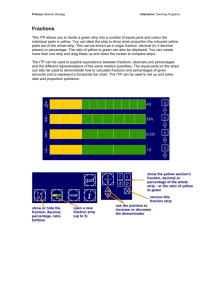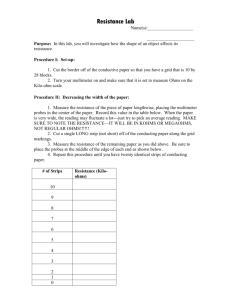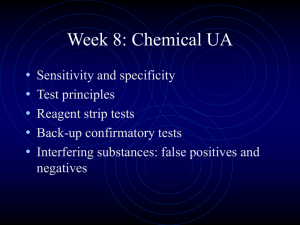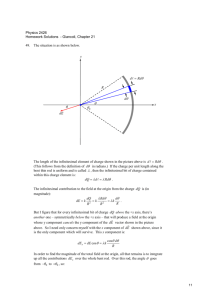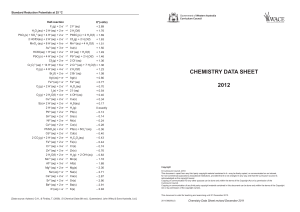Testing Foods for Protein 1
advertisement
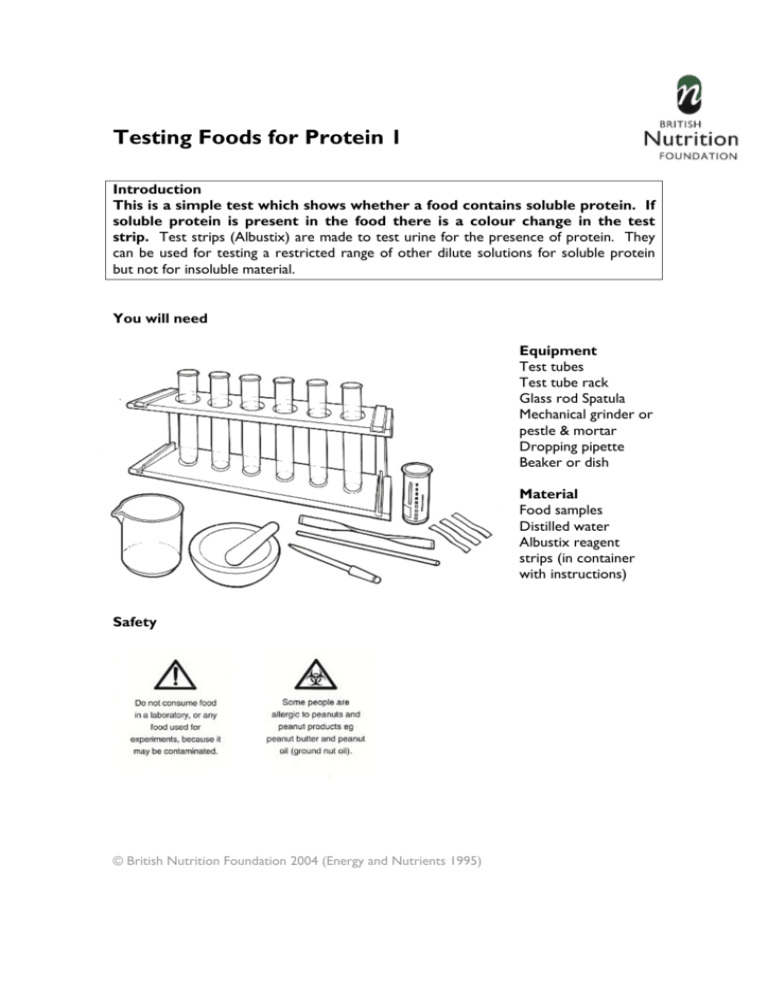
Testing Foods for Protein 1 Introduction This is a simple test which shows whether a food contains soluble protein. If soluble protein is present in the food there is a colour change in the test strip. Test strips (Albustix) are made to test urine for the presence of protein. They can be used for testing a restricted range of other dilute solutions for soluble protein but not for insoluble material. You will need Equipment Test tubes Test tube rack Glass rod Spatula Mechanical grinder or pestle & mortar Dropping pipette Beaker or dish Material Food samples Distilled water Albustix reagent strips (in container with instructions) Safety © British Nutrition Foundation 2004 (Energy and Nutrients 1995) Method 1. If the food to be tested is liquid, go to 2. If the food to be tested is solid, make an extract. Grind, crush or chop a small amount and put into a test tube to a depth of about 2cm. Add a similar amount of distilled water and stir with a rod. Allow to stand for few minutes. 2. Draw up some of the clear liquid into a pipette and then, holding an Albustix reagent strip horizontally over a dish, drop a little of the strip to wet the coloured test area. 3. Shake off any excess liquid and wait for the time stated by the instructions. Then compare the colours shown on label of the Albustix container. 4. Decide if the colour indicates that protein is present in the sample. Compare the depth of colour to estimate whether the sample contains a little. A moderate amount or a lot of protein. Extension Work To test for protein which may be in food in very small amounts, begin with a much larger sample, such as a whole fruit or vegetable. Crush and pound it thoroughly and squeeze the pulp out through a sieve to get as much liquid as possible. Then follow the method from stage 2. © British Nutrition Foundation 2004 (Energy and Nutrients 1995)


